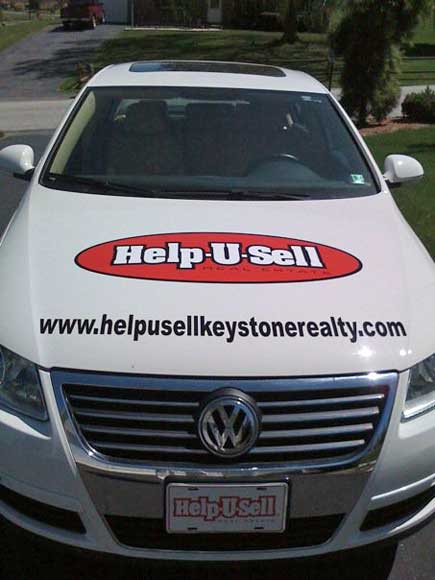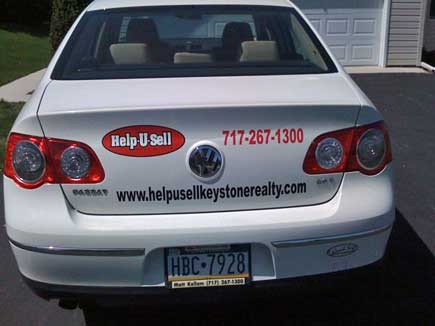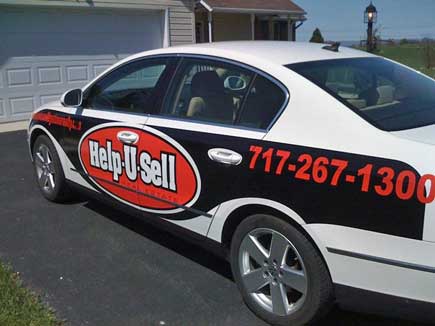Category: Marketing
Did You Stop Marketing? Or Did Marketing Change?
Help-U-Sell Marketing was always intense and usually direct mail oriented. You carefully chose your 15,000 +/- households and then hit them over and over with ETMS and Brag Cards, Free Weekly Lists and Save Thousands ads. The price tag for all of this was large but the pay off (if you chose your target market wisely) was huge. I talked with a former franchisee last month who described his operation as a machine. He set up his marketing and hired an assistant whose job was to handle the in bound seller inquiries and book him five listing appointments a day. That’s all.
And it worked wonderfully . . . until the housing market began to unravel in late 2005.
Suddenly sellers were faced with declining values, a weakening economy, cutbacks, layoffs and a tightening credit. Buyers weren’t buying and sellers couldn’t sell. The power of that wonderful marketing machine faltered too. By 2007, you could spend thousands of dollars each month on marketing and get very little return. Offices that hadn’t worked buyers, who didn’t develop a client base, who never learned how to talk with an expired listing or a for sale by owner — in other words: the ones who had relied on marketing driven listings alone to generate revenue — began to fail.
At the same time, the survivors began to emerge. Sharp, scrappy and determined, these brokers had the guts to look at the new reality with new eyes. The realized that, just as the market had changed, so had the consumer. Those brave souls who ventured into the market were doing their homework and doing it online. Buyers were in control and spent months on the Internet, looking hat houses before they were ready to ink a deal. Putting two and two together, smart Help-U-Sell brokers realized that marketing to sellers was no longer efficient and went after buyers where the buyers were hanging out: the Internet. They invested in websites, search engine optimization, social networking, blogs and more.
They also went back to school. They remembered that every real estate transaction was about solving problems, a buyer’s problems and a seller’s problems. But the problems had changed dramatically from the days when five listing appointments a day could make you a star. Buyers were having difficulty getting financing and sellers were upside down. We had to learn mortgage lending to identify those buyers we could help and we had to learn short sales to minimize the damage to our sellers. Help-U-Sell brokers became navigators, pointing the way for buyers and sellers to make it through the new maze of market realities.
Direct mail marketing didn’t die — it just went on hiatus. We used the break to learn how to work with new tools to generate leads and, with perfect timing, new Help-U-Sell websites bloomed on the Internet.
Today, the real estate market is starting to wake up. I know this because investors are in an absolute feeding frenzy and have been for almost a year. Investors always set the bottom of the market — when they come out to play up ticks in activity and value are not far away. Just as the market improves, we also have to start ratcheting up our marketing. Brag cards are a great way to start — even if they are hung on doorknobs rather than delivered in mailboxes. A carefully targeted Penny Saver or super market mailer campaign might also make good sense. Remember: we survived the downturn by adapting. We changed the way we marketed. We will flourish in the upturn by doing the same thing.
The Internet was (and continues to be) all about reaching buyers. It’s time to start reaching sellers, too — and nobody knows how to do that better than we do.
Why We Charge A Set Fee
The Low Set Fee is the heart of our identity. It is the engine that produces the result we are known for: consumer savings. There are several reasons why we charge a Set Fee instead of a percentage based commission.
- It is logical. If you know how your market behaves at any given time, if you know how long it will take to sell a properly priced property, if you know what you’ll be spending each month on marketing — you are able to know what it will cost to sell the typical home. That, plus a ‘fudge factor,’ is your carrying cost. Add a reasonable profit for your company and you have a Set Fee that makes sense to you and to the consumer.
- Percentage Commissions, on the other hand, make no sense at all. Think about it: if your company charges, say, 6%, the guy with a $200,000 house is going to pay $12,000. His friend, two blocks away with a bigger house, worth $300,000, is going to pay $18,000. What did the friend get for the extra $6,000 he paid? $6,000 more advertising? I don’t think so. Is his agent going to work $6,000 harder? Doubtful. Truth is: they’re paying hugely different prices for the same thing. It’s nuts and the consumer knows it.
- It is a differentiator. Differentiation in the real estate business is a good thing. The California Association of REALTORS has been asking consumers for years if they’d use the same agent again in a real estate transaction. In 2004, 79% said ‘yes.’ In 2009, only 22% said ‘yes.’ If that’s not a confidence crisis, I don’t know what is! Seems to me, the smart thing is to look as little like the rest of the pack as you can. Charging a Set Fee instead of a Commission says you’re different.
- It drives more business to your door. The Low Set Fee that produces savings over what ordinary brokers charge has great appeal to Sellers, resulting in large numbers of listings which create a strong flow of buyer leads through the office. More Sellers = More Buyers = More Business.
Maurine Grisso, on the Broker Roundtable Call today, presented the Set Fee as well as I’ve ever heard it presented. She talks in term of 3 ways your home might sell: You Sell – We Sell – They Sell. No matter how it sells, you always pay the Low Set Fee. If you find your own buyer (You Sell), that’s all you pay. If our Help-U-Sell office finds the buyer (We Sell), you pay your Set Fee plus our Selling Fee. If you elect to go into the MLS and another Broker brings the buyer (They Sell), you’ll pay your Set Fee plus whatever % Commission you offer to the selling broker. In all cases, the Seller saves over what they’d pay a traditional broker.
The Set Fee is who we are. It’s what sets us apart from the crowd. It’s what motivates consumers to call us and ask, ‘How’s that work?’ Set it wisely and re-evaluate it regularly, and wear it like a badge of honor.
The Help-U-Sell Mobi Website.
Several months ago, the Tech Team — OK: Robbie — rolled out the new Help-U-Sell mobile phone website. It’s a nifty tool that enables consumers to access a smart-phone friendly Help-U-Sell website so they can retrieve property information anywhere. For example, a buyer driving neighborhoods who sees a Help-U-Sell listing can now get information about it on the spot through his or her cell phone. They don’t even have to remember to type in .mobi. The system recognizes the mobile phone and directs www.helpusell.com inquiries to the appropriate pages, too.
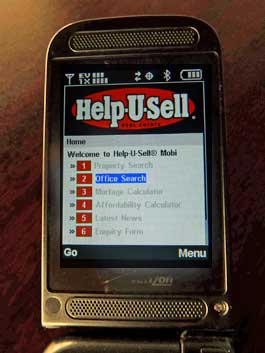 Consumer use of the mobi site was clicking along for a couple of months when Tami Patzer created a press release about the new tool. Inman News picked it up and there was a huge spike in usage. That settled a bit, but then continued to rise as more and more outlets picked up the story. Right now, we’re getting remarkable traffic on helpusell.mobi.
Consumer use of the mobi site was clicking along for a couple of months when Tami Patzer created a press release about the new tool. Inman News picked it up and there was a huge spike in usage. That settled a bit, but then continued to rise as more and more outlets picked up the story. Right now, we’re getting remarkable traffic on helpusell.mobi.
We have to remember: when our parents think of a ‘computer,’ they picture a box that sits on the floor connected to a monitor, keyboard and mouse by wires. When we think of ‘computer,’ we picture a notebook. When the up and coming consumer thinks ‘computer,’ he or she may well picture a smart phone or other mobile device. That’s why helpusell.mobi is so important. You owe it to yourself to get your mobile phone out and play around on the site so that you can talk intelligently to your customers about it.
Get Your Marketing Accent on the Right Syllable
We are very focused on the Internet right now. We should be. We have great new websites that, if managed properly, will become major lead generators. Every Help-U-Sell broker needs to carve out the time and energy to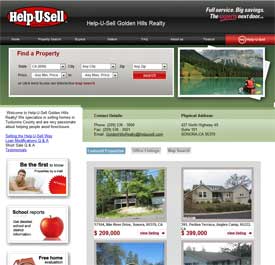 learn how to maximize their web presence and to continue those management functions into the future. That’s a given.
learn how to maximize their web presence and to continue those management functions into the future. That’s a given.
But let’s not forget where most of our business comes from day in and day out:
Signs
Every successful Help-U-Sell broker I’ve talked with says the same thing: A kickin’ website is essential, but most leads come one way or another, from signs. Even website leads sometimes happen when a consumer sees the URL on the sign and responds.
It all gets down to visibility. Are you in a location where your office signage can be seen by residents of the area you are targeting? Do you have a sufficient number of listings* in your target area to make your presence known? Are you supplementing your office signage with a car wrap — which is a mobile billboard for your business? Do each of your sellers  have a number of open house and directional signs and have they been coached to use them at least once a week to promote their seller-held open houses? Have you put blitz signs up in the marketplace?
have a number of open house and directional signs and have they been coached to use them at least once a week to promote their seller-held open houses? Have you put blitz signs up in the marketplace?
All of the above (and more) function to remind the public that you are here and you can save them money. Once they get that, they call . . . or visit your website . . . or walk in. So: please make your new website a priority. That’s essential. But also constantly evaluate your visibility in the marketplace, which all boils down to signs.
By the way, Robbie tells me that all of the new office websites are up now. Many do not have IDX yet, but you can see them and work on them, even if you were not at the Tech Summit. The current address for your new site will be in this configuration: officename.helpusellbeta.com (example, ‘Help-U-Sell Acme Realty’ — acmerealty.helpusellbeta.com). The manual — which includes complete documentation for the new sites — is up on the Download Library. If you need help with any of this, contact Robbie, James, John, Lori, or Tami at corporate.
*What is a ‘sufficient number of listings?’ That varies, but it’s certainly not 3. Or 5. If you’re going to be visible you’ve got to be in double digits and probably more than 20. Our stronger offices routinely carry 40 – 100 or more. If you are not getting enough leads, the first place to look is your listing inventory. The second place to look is how you respond when leads come in. It’s amazing how many leads are trashed every day because we’re not strong on the phone or we’re quick to dismiss them as ‘not serious.’ It’s more amazing how many of these end up buying in the next 30 days.
PS: l still has Help-U-Sell Open House Directional signs in their clearance center. They are a bargain1
still has Help-U-Sell Open House Directional signs in their clearance center. They are a bargain1

